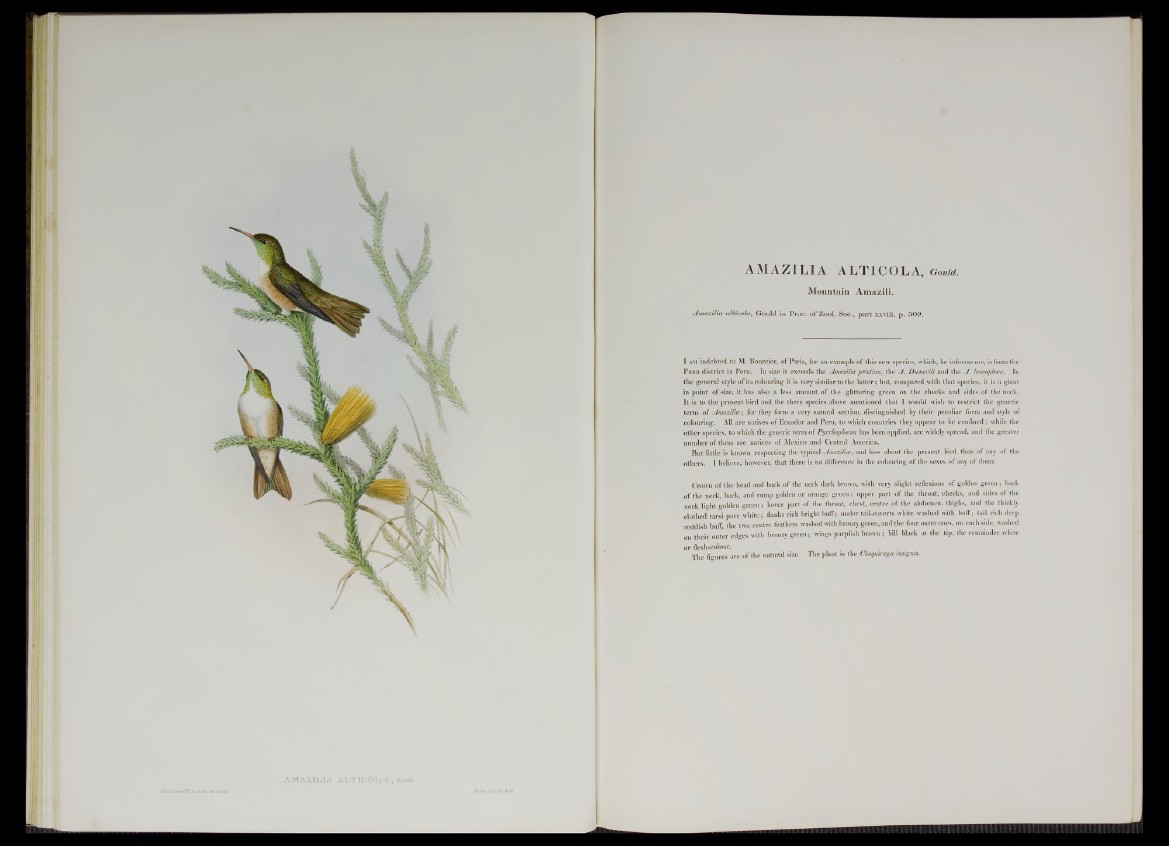
AMAZILIA ALTICOLA, Gould.
Mountain Amazili.
Amazilia alticola, Gould in Proc. of Zool. Soc., p a rt xxviii. p. 309.
I am indebted to M. Bourcier, of Paris, for an example of this new species, which, he informs me, is from the
Puna district in Peru. In size it exceeds the Amazilia pristina, the A. Dumerili and the A. leucopheea. In
the general style of its colouring it is very similar to the latter; but, compared with that species, it is a giant
in point of size, it has also a less amount of the glittering green on the cheeks aud sides of the neck.
It is to the present bird and the three species above mentioned that I would wish to restrict the generic
term of Amazilia; for they form a very natural section, distinguished by their peculiar form and style of
colouring. All are natives of Ecuador and Peru, to which countries they appear to be confined; while the
other species, to which the generic term of Pyrrhophasna has been applied, are widely spread, and the greater
number of them are natives of Mexico and Central America.
But little is known respecting the typical Amazilia, and less about the present bird than of any of the
others. I believe, however, that there is no difference in the colouring of the sexes of any of them.
Crown of the head and back of the neck dark brown, with very slight reflexions of golden green; back
of the neck, back, and rump golden or orange green; upper part of the throat, cheeks, and sides of the
neck lio-ht «-olden green; lower part of the throat, chest, centre of the abdomen, thighs, and the thickly
clothed°tarsi pure white; flanks rich bright buff; under tail-coverts white washed with buff; tail rich deep
reddish buff, the two centre feathers washed with bronzy green, and the four outer ones, on each side, washed
on their outer edges with bronzy green; wings purplish brown ; bill black at the tip, the remainder white
or flesh-colour.
The figures are of the natural size. The plant is the Chuquiraga insignts.
I f f !